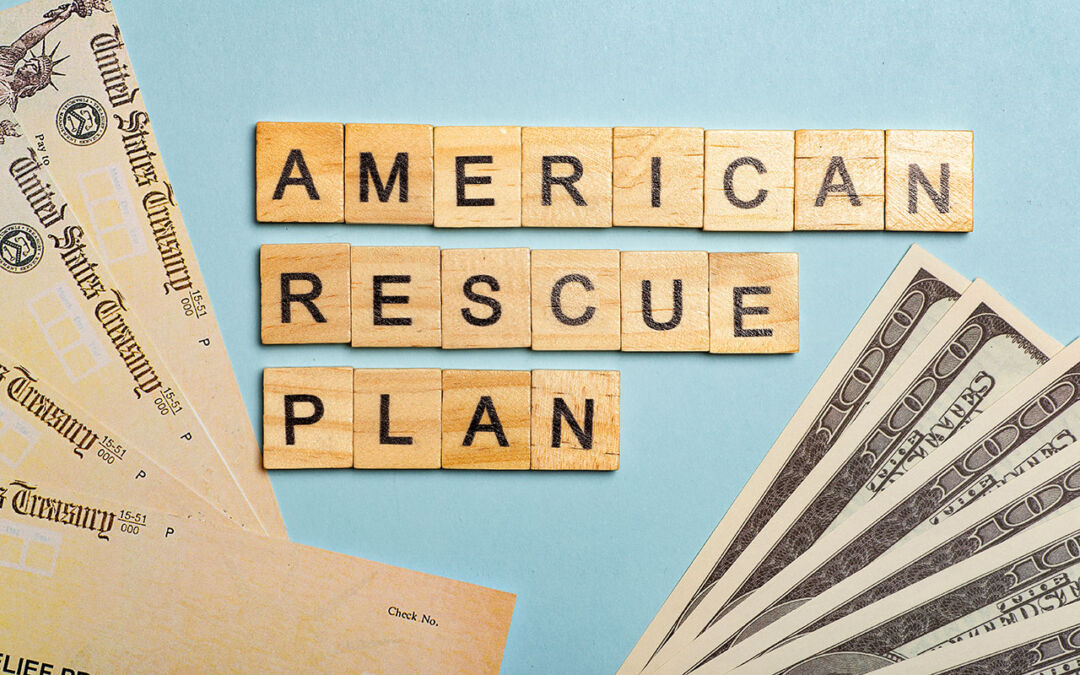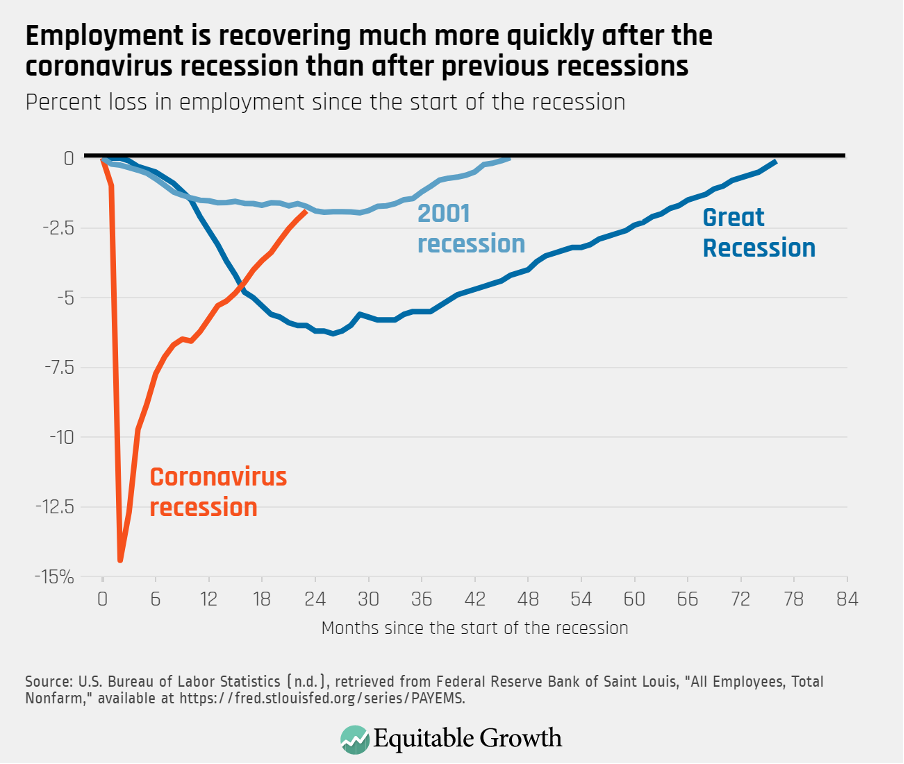The American Rescue Plan helped U.S. families amid the coronavirus pandemic and provides a roadmap for policymakers today

When the coronavirus pandemic began to spread across the United States in March 2020 its impact was immediate and severe. The U.S. unemployment rate skyrocketed from a 50-year low of 3.5 percent in February 2020 to a post-Great Depression high of 14.7 percent in April of that same year. Over the same period, the U.S. labor market shrank by more than 20 million jobs. Industrial production plummeted. And the U.S. economy contracted by 3.4 percent in 2020—the worst economic downturn since 1946.
In the two years that followed, the U.S. government enacted major pieces of legislation to respond to dual health and economic crises. Today marks the one year anniversary of one of those measures, the American Rescue Plan, which provided $1.9 trillion in critical public health investments to fight COVID-19, support struggling families, and grant aid to states, localities, tribes, and territories.
This much-needed legislation helped to lay the groundwork for a robust recovery from the pandemic-induced recession. Specific investments included:
- Nearly $100 billion to combat the public health crisis, including funding for vaccine development and distribution
- More than $100 billion to expand and improve the Child Tax Credit and Earned Income Tax Credit, which bolstered family economic security for low- and middle-income families, reduced poverty for millions of children and improved the ability of their parents to invest in their children’s critical human capital development
- Up to $1,400 for individuals in direct Economic Impact Payments, also known as stimulus checks, to cope with the continuing economic fallout from the pandemic
- An extension of $300 per week supplemental Unemployment Insurance payments
- An extension of voluntary employer tax credits for paid time off due to COVID-19
- $350 billion in funding for state and local governments to save jobs and sustain aggregate demand in the face of budget shortfalls, which at that point left 1 in 20 state and local workers unemployed
- $12 billion for nutritional assistance, including the Supplemental Nutrition Assistance Program, which research shows pays health and economic dividends far into the future for both direct recipients and the economy at large
As my colleagues Carmen Sanchez Cumming, Raksha Kopparam, and Maryam Janani-Flores detailed in their “economic state of the union” piece last week, the unprecedented speed and size of the American Rescue Plan and previous policy responses, such as the Coronavirus Aid, Relief, and Economic Security, or CARES Act, helped millions of workers and households withstand the economic pain brought on by the coronavirus pandemic.
The bounce back in Gross Domestic Product, for example, was much quicker in the United States than in most other high-income countries. The aggregate unemployment rate is now close to its pre-pandemic level. And workers in the bottom of the wage distribution have been experiencing real wage growth. Indeed, the recovery in overall employment has been extraordinarily quick compared to previous U.S. economic downturns. (See Figure 1.)
Figure 1

Elsewhere, Mike Konczal and Emily DiVito at the Roosevelt Institute, Elise Gould and Heidi Shierholz of the Economic Policy Institute, and staff at the Center on Budget and Policy Priorities have all highlighted the important ways in which the American Rescue Plan significantly improved the lives of working families and achieved an historic economic recovery. And yet, each of these analyses also remind us that we cannot stop here.
The continuing reverberations from the pandemic shed light on the systemic inequities embedded in the U.S. economy. These inequities include racial and ethnic disparities in access to income supports, big burdens on mothers and other caregivers, and vulnerability to health risks and worse working conditions on the job, particularly for employees in low-wage positions.
Two years after the onset of the coronavirus recession, disparities remain stark, with many workers, families, and communities still hurting. Throughout the pandemic, Black women and Latinas have faced the greatest difficulties paying for their regular expenses. Additionally, the interaction between gender and racial wage divides—or what I’ve coined “the double gap”—are enduring amid the pandemic, as data shows Black women earn less than White men within the same frontline essential occupations. Moreover, our current bout with inflation poses a serious threat to the economic recovery.
House Select Committee on Economic Disparity and Fairness in Growth
December 8, 2021
Are today’s inequalities limiting tomorrow’s opportunities?
October 3, 2018
Fortunately, the American Rescue Plan strengthened the ability of U.S. families to cope with rising prices—a global problem now exacerbated by Vladimir Putin’s invasion of Ukraine—by improving the U.S. labor market and spurring faster economic growth than the rest of the world.
What’s more, the 2021 legislation helped reduce racial and gender disparities. Direct cash payments and the expanded Child Tax Credit, for example, reduced Black child poverty by more than 33 percent by some estimates. The American Rescue Plan provided $39 billion to help child care providers stay open and compensate early childhood educators.
Expanding and extending policies such as these will be paramount in addressing racial and gender inequities in our society going forward, and will help promote a stronger, more resilient U.S. economy. Even with the historic enactment of the American Rescue Plan and its largely successful implementation, there is an ongoing need to address the structural fragilities in our economy that make us so vulnerable to economic shocks in the first place.
Decisive government investments in our nation’s social infrastructure remain key to overcoming the endemic economic divides across race, gender, and income. With U.S. economic growth currently strong, now is the time to make these investments so that the ongoing recovery is not just strong but also more enduring because it is more equitable.






